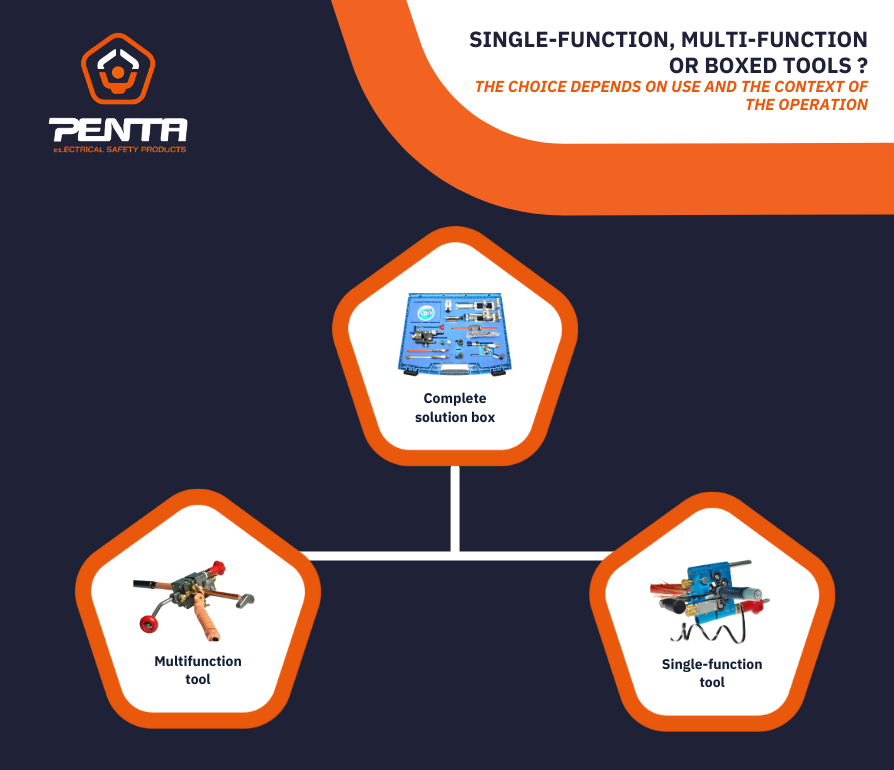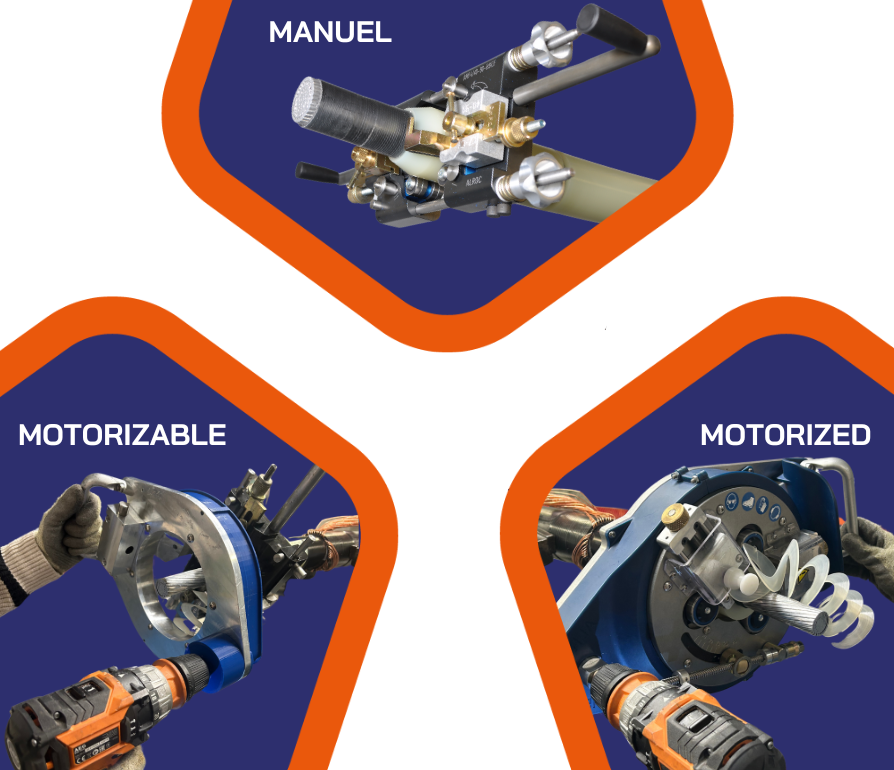This guide tells you everything you need to know about our cable preparation tools! From the choice of tool to the preparation required prior to use, discover all our experts' recommendations.
When purchasing or renting cable preparation tools, checking “Tool-Cable” compatibility, using the characteristics below, will ensure that the chosen tool works properly on the user's cable. So ask yourself the right question for the cable, and link it to the right question for the tool, as follows :


Depending on your answers to these questions, and with the help of the diagram opposite, you'll be able to find the right tool for your needs. Please also feel free to consult our various ranges of cable preparation tools on this topic, and the associated data sheets.
The choice between single-function tools, multi-function tools, or a tool kit depends on several key criteria. If you work in pairs, single-function tools are, for example, the most efficient. In fact, when working with two operators, one can strip the cable sheath while the other removes the semi-conductor, optimizing work time. These tools are also easier to understand and use : each tool has a specific task, which reduces errors. On the other hand, if you work alone, it is better to opt for a multi-function tool, which allows you to perform several tasks almost simultaneously while carrying less equipment.


Here is a summary of the advantages and specifications of each option available to you :
• Single-function tools :
Advantageous for a low-cost investment. They precisely target critical steps, such as removing the semi-conductor, which is often a source of network failures. They are simple to use and well-suited for projects where precision at each stage is essential.
• Multi-function tools :
Compact and lightweight, a multi-function tool allows you to perform several operations (stripping, cutting, etc.) with a single device, reducing user burden. Ideal for field operators who need versatile equipment, such as for medium voltage synthetic cables. This tool is more efficient when you need to carry and handle fewer tools.
• Tool kits :
Tool kits offer a complete solution. They include both single-function and multi-function tools, along with additional tools for other parts of a medium voltage cable, such as the aluminum screen. This type of solution is perfect for operators who need to have all their equipment at hand, allowing them to work on various parts of the cable without compromising precision or safety. While the investment in a tool kit is higher, it offers unmatched durability, versatility, and protection.
Thanks to numerous product demonstrations worldwide in various environments and for different applications, we have observed a wide range of cable handling practices that vary from place to place and company to company.
However, certain common stages emerge in cable processing, from development to commissioning :


The ongoing innovation and improvement of our solutions aim to enhance operator safety and comfort while ensuring precise cable preparation to preserve its properties after processing.